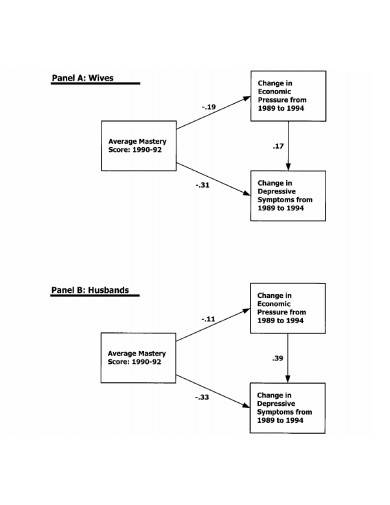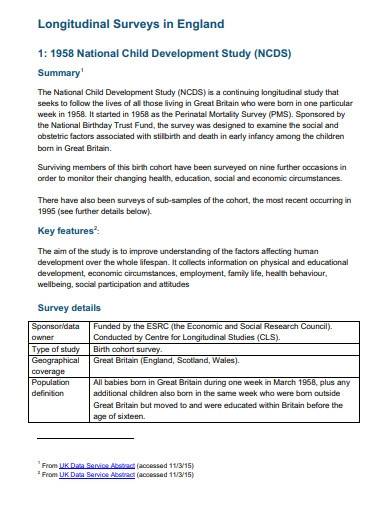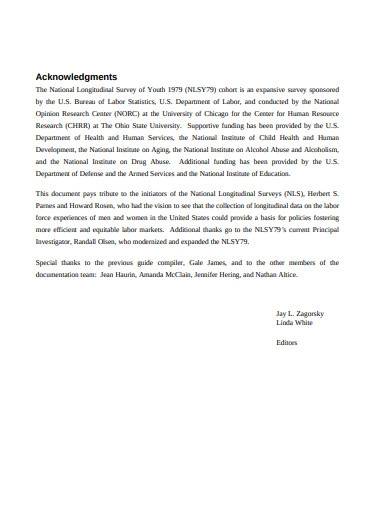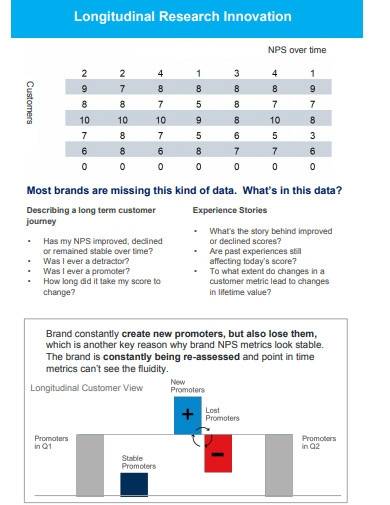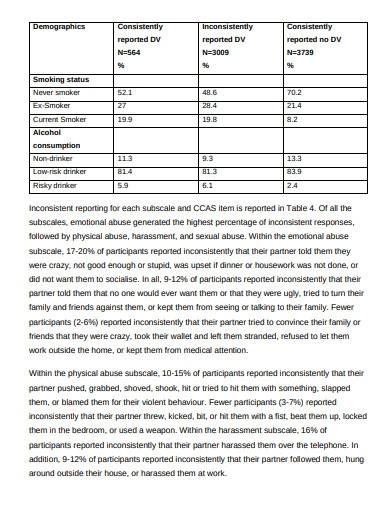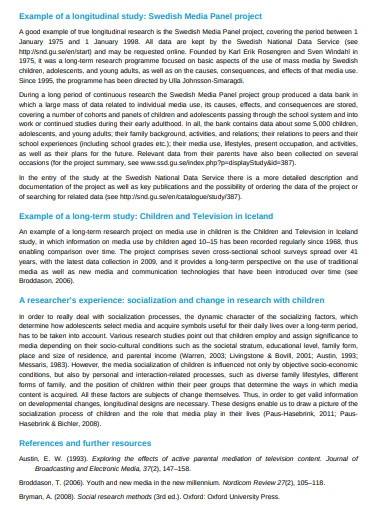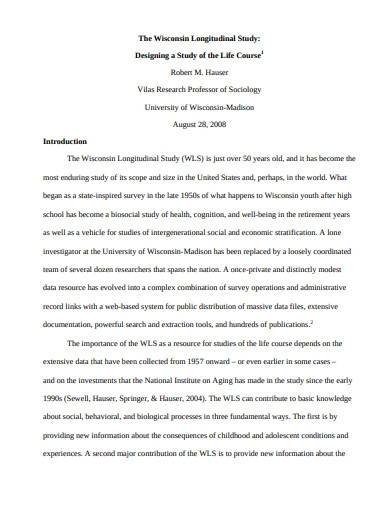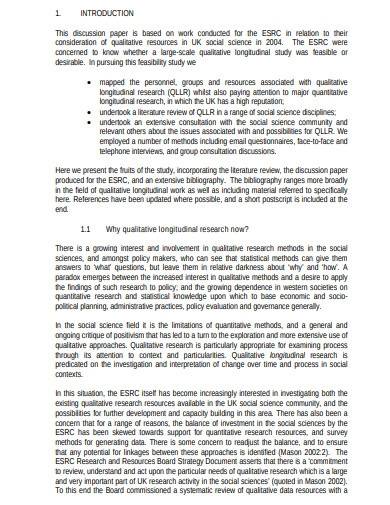One of the primary advantages of longitudinal research is that it allows researchers to observe changes over time. This method is particularly useful for studying developmental trajectories, such as how children develop over time or how adults change as they age. Longitudinal research can also be used to study the effects of behavior intervention plan or treatment plan, such as the long-term impact of a medication on a patient’s health and safety plan.
FREE 10+ Longitudinal Research Samples & Templates in PDF | MS Word
1. Longitudinal Qualitative Research Template
2. Resilience Longitudinal Research
3. Sample Qualitative Longitudinal Research
4. National Longitudinal Survey Template
5. National Longitudinal Survey Sample
6. Longitudinal Research Innovation Template
7. Longitudinal Research in Violence
8. Longitudinal Research Study Sample
9. Sample Longitudinal Study Survey
10. Basic Longitudinal Research Template
11. Standard Longitudinal Research Template
What is Longitudinal Research?
Longitudinal research is a powerful research method that involves following a group of individuals over an extended period of time. This research design is often used to investigate changes and patterns in behavior, attitudes, or other variables of interest. In this essay, we will discuss the advantages and disadvantages of longitudinal research, how it is conducted, and some of its real-world applications.
How To Make Longitudinal Research?
Another advantage of longitudinal research is that it allows researchers to investigate causal relationships. By collecting data collection sheet checklist at multiple time points, researchers can identify whether changes in one variable are related to changes in another variable. Making a longitudinal research study involves several steps, including:
Step 1- Identify Research Question
The first step in conducting longitudinal research is to identify the research question. What is the specific phenomenon that you want to study? What is the variable of interest? What is the research hypothesis or research question you want to answer?
Step 2- Identify Sample
Once the research question is identified, the next step is to identify the sample. What population do you want to study? How will you recruit participants? Consider factors such as age, gender, ethnicity, and other demographic characteristics that are relevant to the research question.
Step 3- Data Collection
Once the sample is identified and recruited, the next step is to collect data. Research data collection form can be done using various methods, including surveys, interviews, observation, or medical records. You will need to decide on the best method for collecting data that will answer your research question.
Step 4- Data Analysis
After collecting the data, the next step is to analyze it. This involves organizing and summarizing the data using appropriate statistical analysis. You will need to use statistical software such as SPSS or SAS to analyze the data. Once the data analysis is complete, the next step is to interpret the results. What do the findings mean in relation to the research question? What are the implications of the results for theory, practice, or policy?
What are the benefits of longitudinal research?
Longitudinal research allows researchers to observe changes over time, investigate causal relationships, and study developmental trajectories. It can also be used to study the effects of interventions or treatments and inform the development of interventions or treatments.
How is longitudinal research conducted?
To conduct longitudinal research, researchers identify a sample of participants who are willing to be followed over time. They then collect data at multiple time points using a variety of methods, such as surveys, interviews, or sample observation feedback.
What are the challenges of longitudinal research?
The primary challenges of longitudinal research include attrition, which occurs when participants drop out of the study over time, and the potential for bias due to selective attrition. Longitudinal research can also be time-consuming and expensive, requiring resources to maintain contact with participants over an extended period of time.
In conclusion, longitudinal research is a powerful research method that allows researchers to investigate changes and patterns over time. While there are some disadvantages to this method, it is a valuable tool for studying developmental trajectories, causal relationships, and the long-term effects of interventions. By following a group of individuals over an extended period of time, researchers can gain a better understanding of how and why certain phenomena occur, which can inform the development of interventions and treatments.
Related Posts
FREE 10+ Content Validity Samples & Templates in PDF
FREE 10+ Construct Validity Samples & Templates in MS Word | PDF
FREE 10+ Code of Human Research Ethics Samples & Templates in MS Word | PDF
FREE 10+ Biography Research Report Samples and Templates in PDF
FREE 10+ System Documentation Samples & Templates in MS Word | PDF
FREE 10+ Process Document Samples & Templates in MS Word | PDF
FREE 10+ Action Research Samples & Templates in PDF
FREE 10+ Causal Research Samples & Templates in MS Word | PDF
FREE 10+ Client Discovery Samples & Templates in MS Word | PDF
FREE 10+ Null Hypothesis Samples & Templates in MS Word | PDF
FREE 9+ Product Knowledge Samples & Templates in PDF
FREE 10+ Software Documentation Samples & Templates in MS Word | PDF
FREE 10+ Exploratory Research Samples & Templates in PDF | MS Word
FREE 10+ Experimental Research Samples & Templates in MS Word | PDF
FREE 10+ Descriptive Research Samples & Templates in PDF


